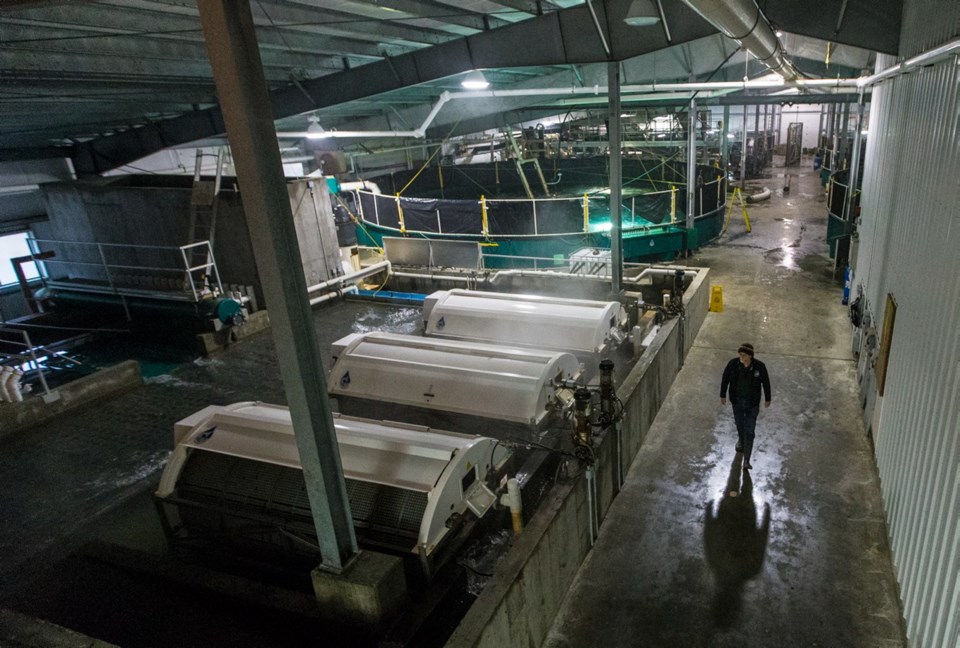Re: “UBCM stacks deck against salmon farming,” comment, Sept. 9.
The ‘Namgis First Nation has a long history of trying to solve the problems open netpen fish farming causes for wild salmon and their environment.
We’ve seen the impact of sea lice, farm waste, lights and nets on salmon fry, clam beds, birds, sea mammals and other marine life.
We also understand the importance of jobs — to the ‘Namgis people and to the people of B.C.
And we’ve been working hard to try to find a way to protect both the environment and jobs.
Many years ago, we stopped fishing anywhere near the Nimpkish River, the heart of our ancestral lands, which had one of B.C.’s big sockeye runs.
A few years ago, we started Kuterra, a commercial, pilot-scale, land-based salmon farm, to disprove the myths about land-based salmon farming.
More recently, we’ve gone to court to make sure salmon fry that are released into open netpens are free of disease. So far, the court has agreed that fish farms stocked with virus-infected smolts could cause irreparable harm. We’re now waiting for a final decision.
And at the moment, we’re having productive talks with the B.C. government and with fish-farm companies to find a safer way to farm fish.
Then we read comments from the B.C. Salmon Farmers Association that have little supporting evidence, or that are just plain wrong.
This is not helpful. Not for wild fish, or the environment or jobs.
First, the technology does exist today to grow large numbers of fish on land. It didn’t exist 30 years ago, and it took Kuterra, and a handful of other pilots around the world, to show the way to full-scale operations.
Now, we have a very large farm being built in Florida, and when all its modules are finished, it will grow 90,000 tonnes of fish a year on a 33-hectare site. That’s almost as much fish as all of B.C. grows right now, on a piece of land much smaller than one square kilometre.
Even using Kuterra’s older, less-compact design, a scaled-up operation to produce 90,000 tonnes would take just over three square kilometres.
The B.C. Salmon Farmers Association says it would take 159 square kilometres. Its number is either a myth or a mystery. In either case it’s very wrong.
There’s also an old myth about water use in land-based fish farming. Land-based operations typically clean and recirculate most of their water, and replace only a small amount on each cycle — typically less than one per cent of the total. And the water that is released is clean. Most water used in land-based farms around the world is disinfected seawater.
Power use is another myth. At Kuterra, electricity isn’t even a top three cost. It’s No. 4 by a large margin. All it takes is good design with energy-saving measures, such as using gravity to help water flow.
On jobs, the figure used by the industry association, 6,600, includes direct, indirect and induced jobs. Land-based salmon farming will employ the same people in indirect and induced jobs, and provide a similar number of direct jobs. For those in direct operations, we expect that most people would rather work closer to home, and not have to spend time away, and burn boat fuel and generator fuel to staff up remote farm sites.
The challenge with jobs is not job loss. Rather it’s job transition, and there are groups working right now on recommendations to make that happen as smoothly as possible in B.C.
Kuterra and other operations have disproved all these myths and more about land-based farming. We’re disappointed that the industry association clearly hasn’t done its homework, or worse, is just reusing old, wildly inaccurate statements, rather than working with us and others to solve the problems we face while at the same time creating sustainable jobs in the new clean, green economy that land-based salmon farming is part of.
Donald Svanvik is hereditary chief and chief councillor of the ‘Namgis First Nation.



